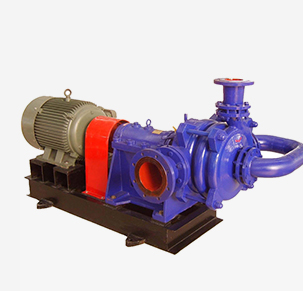English
- Afrikaans
- Albanian
- Amharic
- Arabic
- Armenian
- Azerbaijani
- Basque
- Belarusian
- Bengali
- Bosnian
- Bulgarian
- Catalan
- Cebuano
- Corsican
- Croatian
- Czech
- Danish
- Dutch
- English
- Esperanto
- Estonian
- Finnish
- French
- Frisian
- Galician
- Georgian
- German
- Greek
- Gujarati
- Haitian Creole
- hausa
- hawaiian
- Hebrew
- Hindi
- Miao
- Hungarian
- Icelandic
- igbo
- Indonesian
- irish
- Italian
- Japanese
- Javanese
- Kannada
- kazakh
- Khmer
- Rwandese
- Korean
- Kurdish
- Kyrgyz
- Lao
- Latin
- Latvian
- Lithuanian
- Luxembourgish
- Macedonian
- Malgashi
- Malay
- Malayalam
- Maltese
- Maori
- Marathi
- Mongolian
- Myanmar
- Nepali
- Norwegian
- Norwegian
- Occitan
- Pashto
- Persian
- Polish
- Portuguese
- Punjabi
- Romanian
- Russian
- Samoan
- Scottish Gaelic
- Serbian
- Sesotho
- Shona
- Sindhi
- Sinhala
- Slovak
- Slovenian
- Somali
- Spanish
- Sundanese
- Swahili
- Swedish
- Tagalog
- Tajik
- Tamil
- Tatar
- Telugu
- Thai
- Turkish
- Turkmen
- Ukrainian
- Urdu
- Uighur
- Uzbek
- Vietnamese
- Welsh
- Bantu
- Yiddish
- Yoruba
- Zulu
Telephone: +86 13120555503
Email: frank@cypump.com
Oct . 18, 2024 22:44 Back to list
Optimizing Pumps for Flue Gas Desulfurization in Industrial Applications
Flue Gas Desulfurization Pumps An Essential Component in Pollution Control
Flue gas desulfurization (FGD) is a crucial process employed by industries, particularly in power generation, to reduce sulfur dioxide (SO2) emissions from flue gases. The necessity for this technology has risen significantly due to stringent environmental regulations aimed at protecting air quality and mitigating acid rain. Within the FGD systems, pumps play a vital role in ensuring the efficient operation of this emission control technology. This article delves into the functionality, types, and importance of FGD pumps, while highlighting their contribution to environmental sustainability.
Flue Gas Desulfurization Pumps An Essential Component in Pollution Control
Several types of pumps are utilized in flue gas desulfurization systems, each designed for specific tasks and conditions. Slurry pumps, for instance, are extensively used to handle the abrasive and viscous nature of the limestone slurry. These pumps are engineered to withstand the corrosive environment while managing the solid content suspended in the liquid. Centrifugal pumps are another type commonly deployed in FGD systems to transport the clean scrubbed liquid and any other liquid mediums necessary for the process. The selection of the appropriate pump type is critical, as it can influence not only the efficiency of the desulfurization process but also the overall operational costs.
flue gas desulfurization pump

The importance of properly functioning FGD pumps cannot be overstated. A malfunction can lead to reduced efficiency in SO2 removal, resulting in increased emissions and potential fines for non-compliance with environmental regulations. Downtime due to pump failures can also result in significant operational losses. Therefore, regular maintenance and monitoring of pump performance are essential. Predictive maintenance strategies utilizing advanced technologies such as vibration analysis and thermography have emerged as standard tools in ensuring the reliable operation of FGD pumps.
In addition to operational efficiency, there are economic considerations associated with FGD pumps. The choice of pump technology can have a substantial impact on capital expenditure (CAPEX) and operational expenditure (OPEX). While initial costs may vary, it's important to assess the long-term value, which includes maintenance requirements and energy consumption. Energy-efficient pumps can contribute to the overall cost-effectiveness of FGD systems by reducing electricity consumption and operational costs over time.
As industries increasingly shift towards sustainability and cleaner technologies, flue gas desulfurization systems, backed by robust pump solutions, will play a pivotal role in achieving emission reduction goals. Advances in pump design and materials are continuously enhancing the durability and efficiency of FGD pumps. Furthermore, the implementation of sophisticated monitoring and control systems allows for improved performance tracking, leading to enhanced operational reliability.
In conclusion, flue gas desulfurization pumps are a critical component in the battle against air pollution. Their ability to provide efficient slurry handling and maintain desirable flow rates directly influences the effectiveness of SO2 removal systems. As the world moves towards stricter environmental compliance, investing in reliable and efficient pump technology will not only ensure adherence to regulations but also promote a sustainable future. The integration of innovation in FGD pump design will undoubtedly lead to significant improvements in both environmental performance and cost efficiency in the industry.
-
Heavy-Duty Mining Sludge Pumps - Wear-Resistant Slurry Handling
NewsAug.02,2025
-
Horizontal Split Case Pump with GPT-4 Turbo | High Efficiency
NewsAug.01,2025
-
ISG Series Pipeline Pump - Chi Yuan Pumps | High Efficiency, Durable Design
NewsAug.01,2025
-
Advanced Flue Gas Desulfurization Pump with GPT-4 Turbo | Durable & Efficient
NewsJul.31,2025
-
ISG Series Vertical Pipeline Pump - Chi Yuan Pumps | Advanced Hydraulic Design&Durable Construction
NewsJul.31,2025
-
ISG Series Vertical Pipeline Pump - Chi Yuan Pumps | Energy Efficient & Low Noise
NewsJul.31,2025










